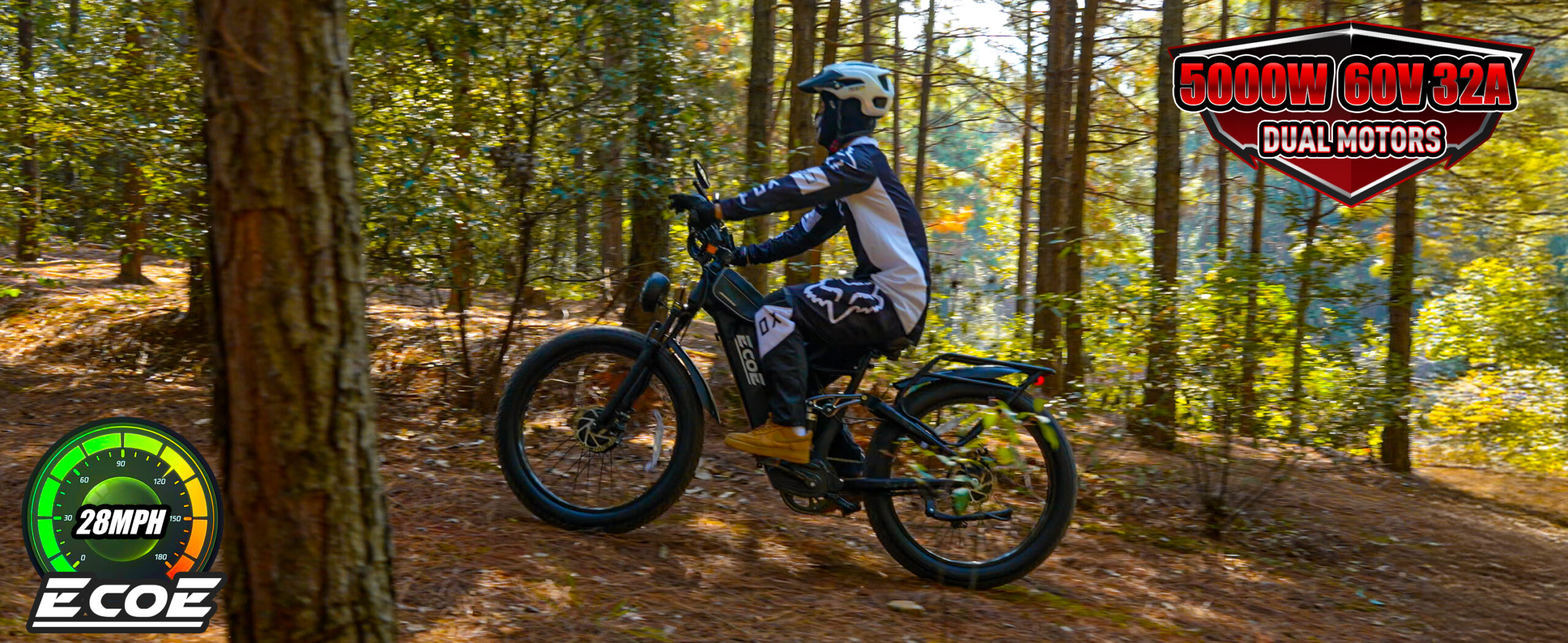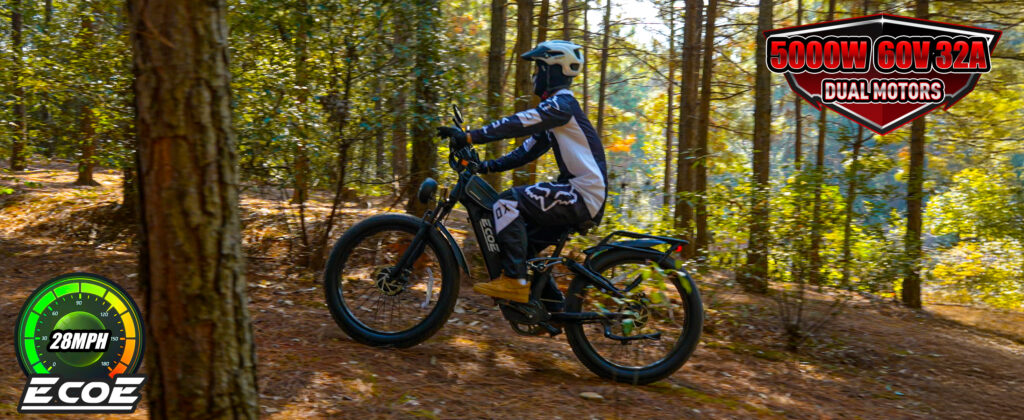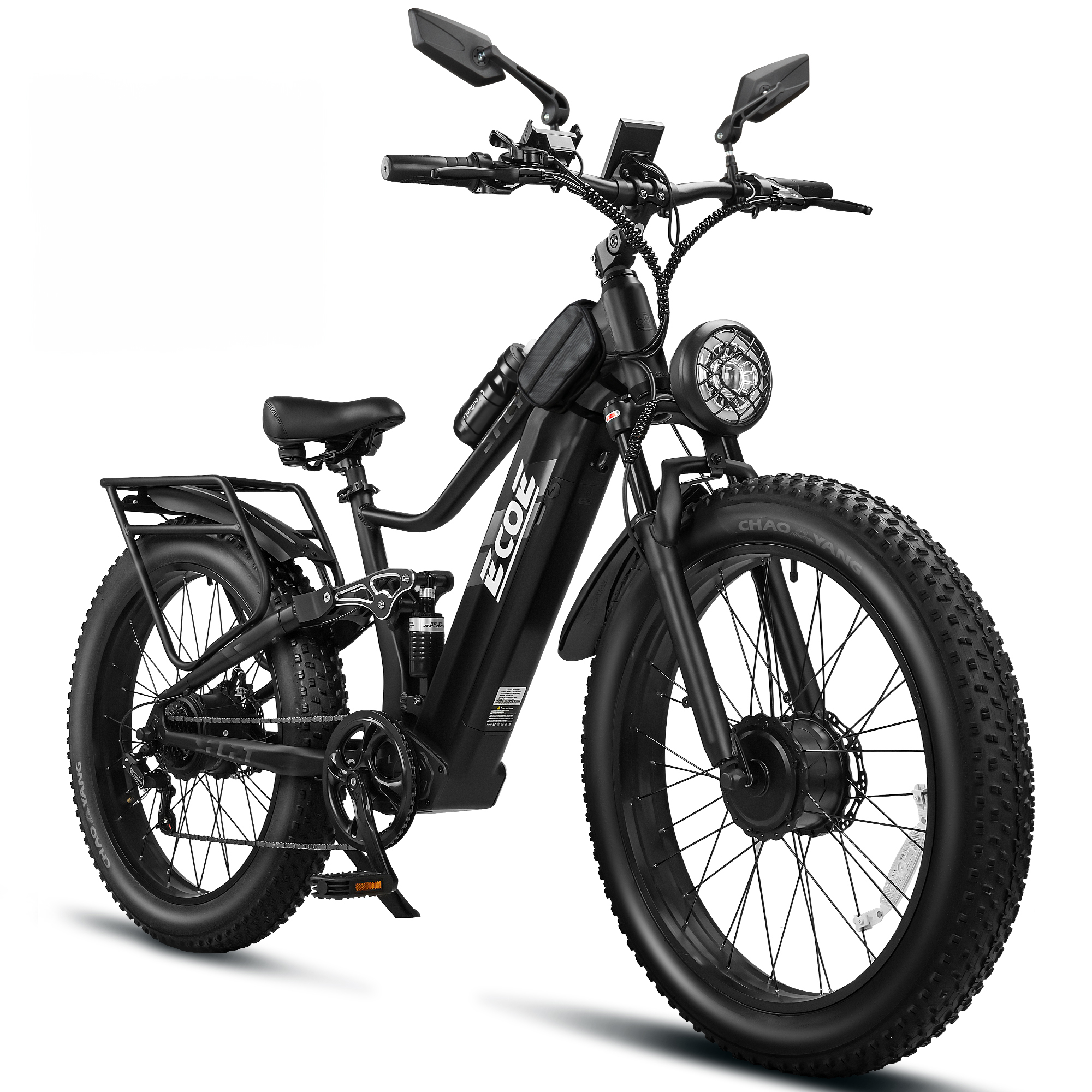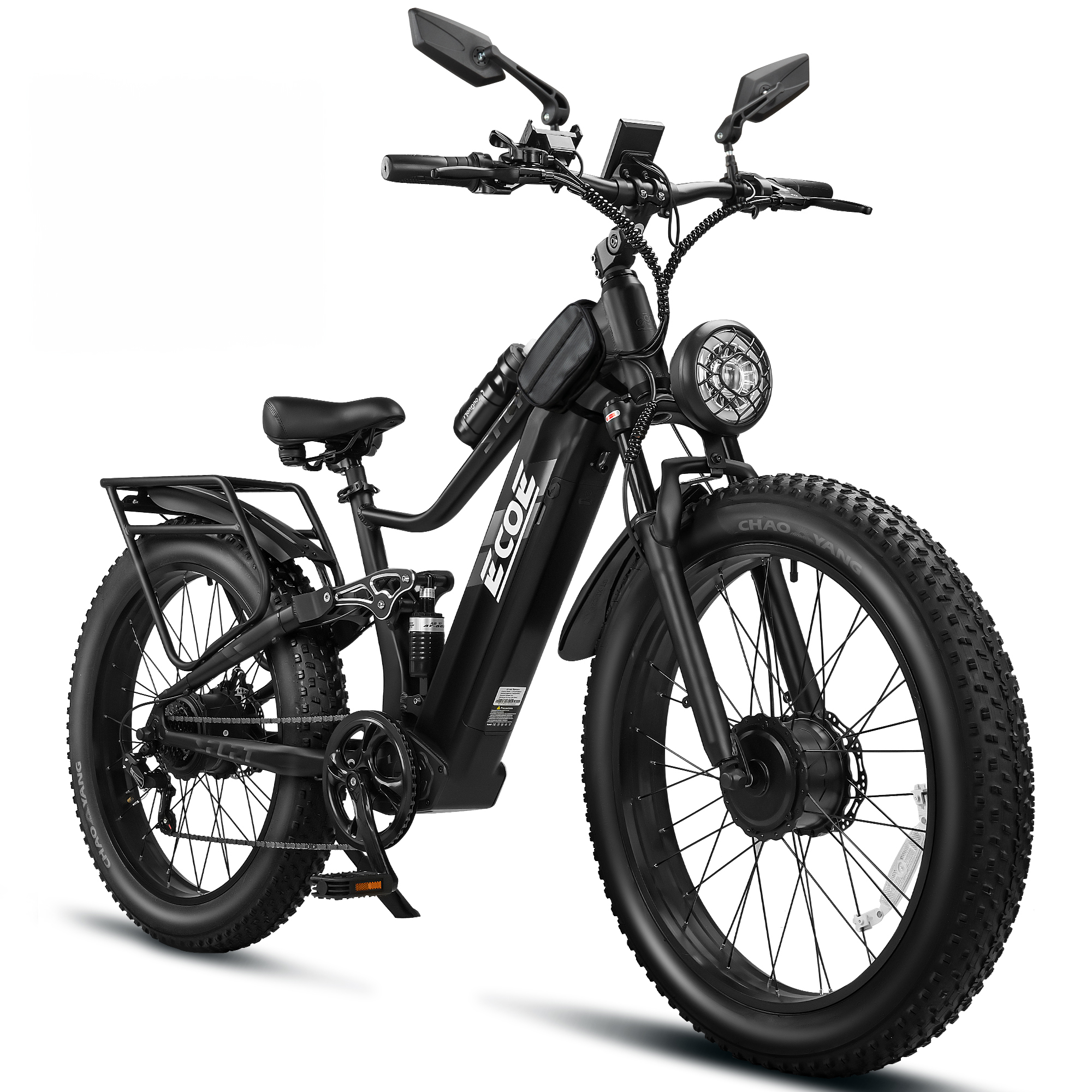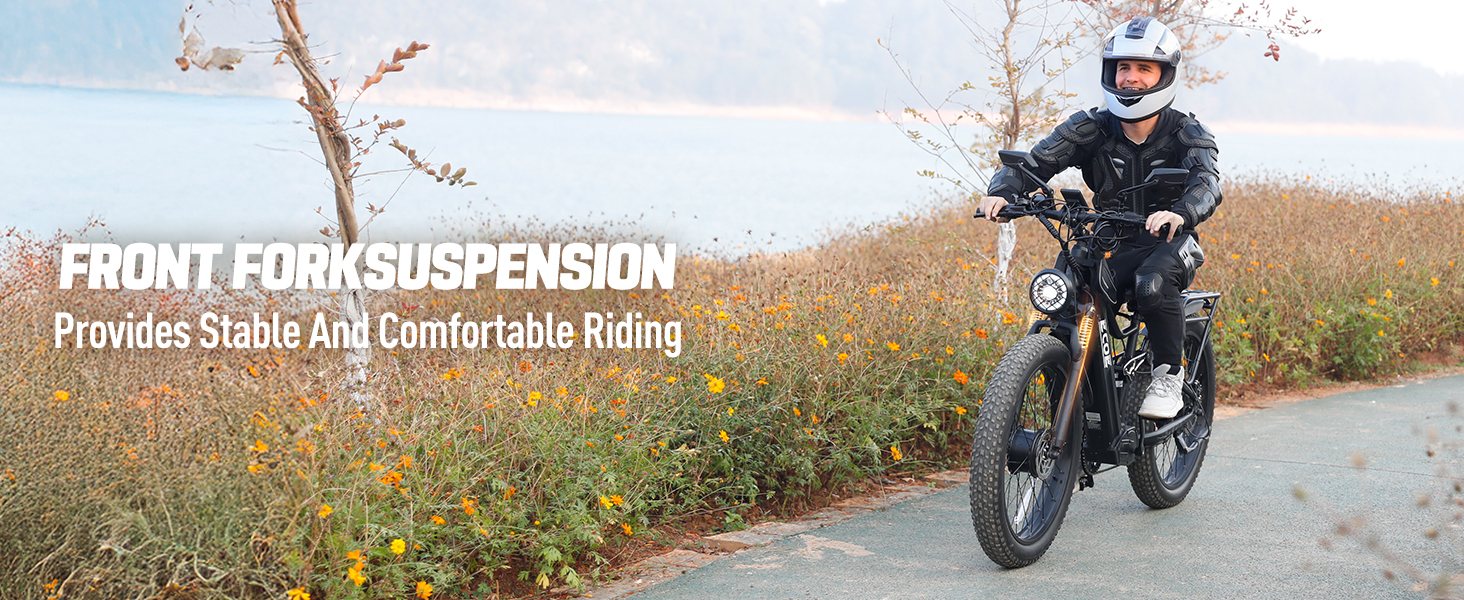
Apr 15, 2025
|
0 comments
How Fast Can I Go on My E-Bike? Understanding Speed Limits and Factors
Electric bikes, or e-bikes, have become increasingly popular as an alternative mode of transport, offering convenience, speed, and eco-friendliness. One of the most common questions from riders is: “How fast can I go on my e-bike?” In this article, we’ll explore the factors that determine an e-bike’s speed, including motor power, battery capacity, legal restrictions, and more. Whether you’re using an e-bike for daily commuting or recreational purposes, understanding these factors will help you get the most out of your ride. When it comes to e-bike speed, several factors come into play. Generally, the top speed of an e-bike is determined by its motor power, battery capacity, and legal restrictions. Most e-bikes, especially those designed for commuting or recreational use, will have a maximum speed of around 20 mph (32 km/h) to 28 mph (45 km/h), depending on the classification of the e-bike and where it’s being used. For example, Class 1 e-bikes, which only provide pedal assistance without throttle control, are typically limited to 20 mph (32 km/h) in most regions. Meanwhile, Class 3 e-bikes, which are pedal-assist bikes with throttle capabilities, can go up to 28 mph (45 km/h). However, there are some high-performance e-bikes, like those with 5000W motors from brands like Ecoe, that can exceed these limits in specific conditions. One of the primary factors that affect how fast you can go on your e-bike is its motor power. E-bikes come with motors that typically range from 250W to 5000W, with 500W to 750W motors being the most common in mid-range bikes. The power of the motor directly influences the acceleration and top speed of the bike, allowing more powerful models to sustain higher speeds more easily. However, these high-powered bikes are usually not allowed to travel at such high speeds in certain areas unless special […]
Read more
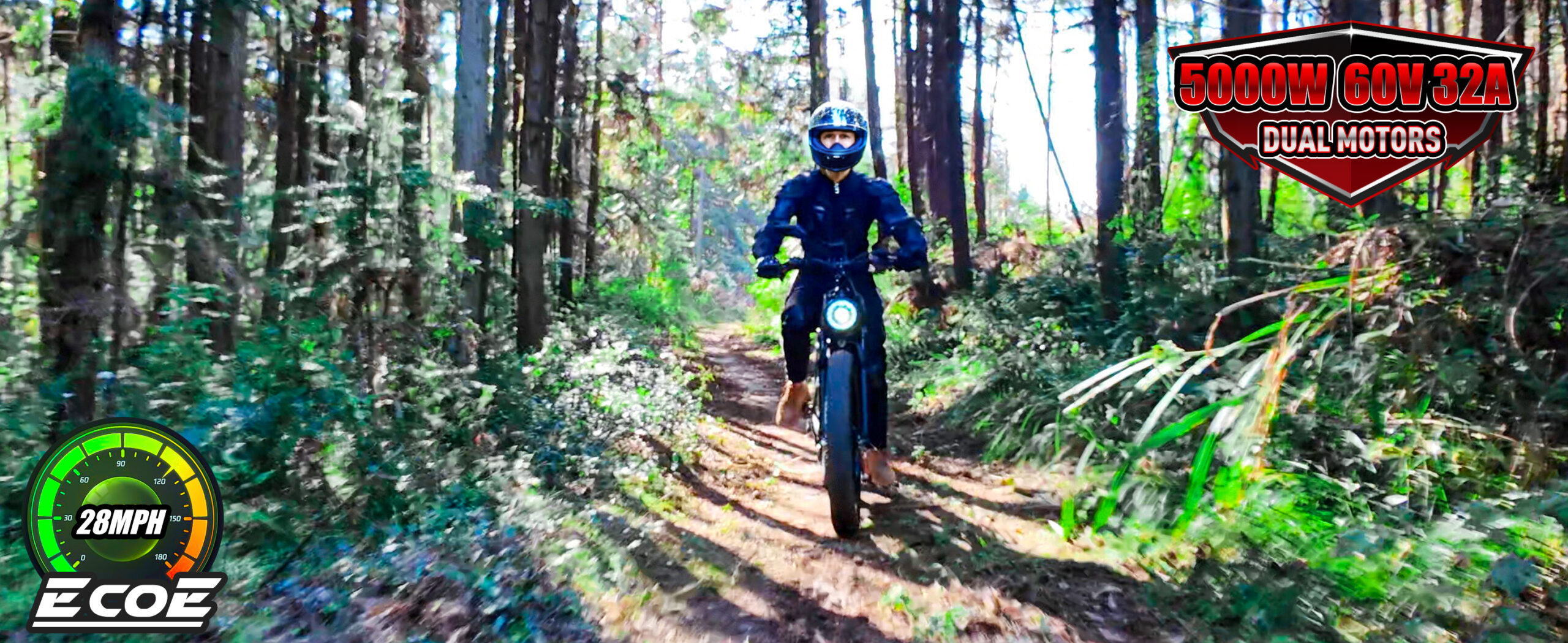
Apr 15, 2025
|
0 comments
History of E-Bike Maximum Speed (2000s–2010s)
The EcoE 5000W electric bike Powerful Motor: EcoE is equipped with a 60V 5000W high-speed brushless motor. Due to different loads and road conditions, the electric bike drive system provides adjustable assistance, allowing you to stay healthy, relax, and exercise.Accessories: This electric bike accessory set includes a rearview mirror, water bottle holder and bottle, a sturdy phone mount, and a waterproof phone pouch. The reinforced cargo rack allows you to easily carry extra items needed for your ride. Additionally, if you need more accessories, you can purchase a detachable storage rack, passenger safety seat, trailer, and more.60V 32AH Battery: The bike is equipped with a high-capacity, removable 32AH battery, providing longer range per charge and over 1000 charge cycles. With pedal assist, the fat tire e-bike can travel 35-80 miles, depending on riding mode, load, and terrain. You can also purchase a spare battery for extended trips.Comfort and Versatility: This fat tire electric bike comes with dual front suspension and rear shocks to reduce impact and strain during rides. Its 26-inch wheels, 4-inch tires, and SHIM 7-speed system offer excellent grip across diverse terrains. Front and rear disc brakes ensure safe, responsive stopping, whether on mountain trails or city streets. – The 2000s to 2010s marked rapid advancements in e-bike technology, driven by mass production in China and global demand. Despite increasing regulatory speed limits, technological innovations and market needs pushed performance improvements, while illegal modifications became widespread. Key phases include: Table: Key Milestones & Speed Evolution Year Event/Policy Max Speed (km/h) Technical/Market Features 2000 Mass Production in China 20 Lead-acid batteries, hub motors 2004 GB 17761-1999 Enforcement 20 (regulated) Standardization of speed limits 2005 Brushless Motor Adoption 25 (actual) Efficiency improvements, speed bypass 2007 Market Boom 35-40 (modified) Widespread illegal modifications 2010 New Standard Draft 25 (proposed) Policy-market tensions intensify 2013 Lithium Battery […]
Read more
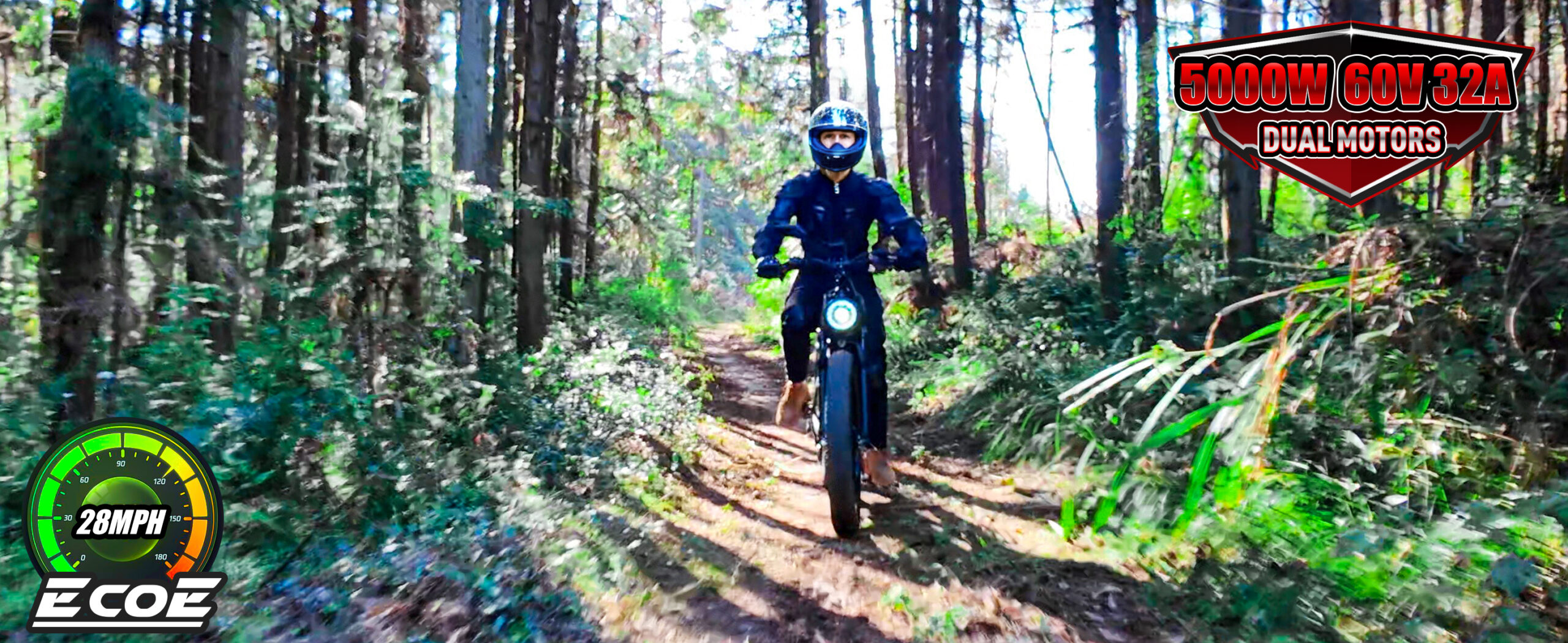
Apr 15, 2025
|
0 comments
Development History of Maximum Speed for Electric Bicycles (1960s–1990s)
The EcoE 5000W electric bike Powerful Motor: EcoE is equipped with a 60V 5000W high-speed brushless motor. Due to different loads and road conditions, the electric bike drive system provides adjustable assistance, allowing you to stay healthy, relax, and exercise.Accessories: This electric bike accessory set includes a rearview mirror, water bottle holder and bottle, a sturdy phone mount, and a waterproof phone pouch. The reinforced cargo rack allows you to easily carry extra items needed for your ride. Additionally, if you need more accessories, you can purchase a detachable storage rack, passenger safety seat, trailer, and more.60V 32AH Battery: The bike is equipped with a high-capacity, removable 32AH battery, providing longer range per charge and over 1000 charge cycles. With pedal assist, the fat tire e-bike can travel 35-80 miles, depending on riding mode, load, and terrain. You can also purchase a spare battery for extended trips.Comfort and Versatility: This fat tire electric bike comes with dual front suspension and rear shocks to reduce impact and strain during rides. Its 26-inch wheels, 4-inch tires, and SHIM 7-speed system offer excellent grip across diverse terrains. Front and rear disc brakes ensure safe, responsive stopping, whether on mountain trails or city streets. – 1960s–1970s: Experimental Exploration 1980s: Commercialization and Technical Improvements 1990s: Technological Leap and Market Emergence 表格:关键发展节点(1960s–1990s) Period Technical Advancements Max Speed (km/h) Notable Models/Technologies Impact & Significance 1960s First experimental designs 15–18 Curtiss-Wright prototype Validated electric propulsion 1970s Initial lead-acid battery adoption 18–22 Early prototypes Explored urban commuting potential 1983 China’s first mass-produced e-bike 20–25 Yongjiu DX-130 Launched China’s e-bike market 1989 Yamaha’s brushless motors & NiMH 30 Yamaha EN-1 prototype Set technical benchmarks 1993 Nickel-cadmium batteries commercialized 32–35 Yamaha EN-1 production version Extended range to 50 km in Europe 1998 Lightweight design in China (Daluge) 38–40 Daluange lightweight models Enabled mass production
Read more

Apr 15, 2025
|
0 comments
Why Are E-Bikes Limited to 28 mph? Understanding the Speed Regulations of Electric Bikes
E-bikes have become an increasingly popular mode of transportation, offering eco-friendly and convenient solutions for urban commuting. However, many riders wonder why some e-bikes are limited to a maximum speed of 28 mph. In this article, we explore the reasons behind the 28 mph limit on certain e-bikes, from legal and safety regulations to the technical aspects of bike design. We also discuss how this limit affects the riding experience and why it is a common feature for certain classes of e-bikes. One of the key factors driving the 28 mph speed limit on certain e-bikes is the regulatory environment. In many countries, e-bikes are categorized by their speed and motor capabilities, and the speed limit varies based on these factors. In the United States, for example, e-bikes are classified into three categories: The 28 mph limit applies to Class 3 e-bikes, which are pedal-assist bikes that can also use throttle control. These bikes are designed to provide more power and speed for experienced riders. Class 3 e-bikes are subject to specific legal restrictions that ensure safety, and their higher speed limits are allowed in areas where they are explicitly approved, often in cities with well-developed cycling infrastructure. The speed limit of 28 mph is set to ensure that e-bikes are still classified as bicycles and not motorcycles or motorized vehicles. This distinction helps them avoid the more stringent licensing, insurance, and registration requirements that are associated with vehicles in the higher speed category. While the 28 mph limit might seem fast compared to lower-speed e-bikes, it is still considered a safe maximum speed for certain e-bike categories. However, safety becomes more critical as the speed increases. At speeds above 28 mph, the dynamics of riding change significantly. For example, braking distances become longer, and the risk of injury in […]
Read more
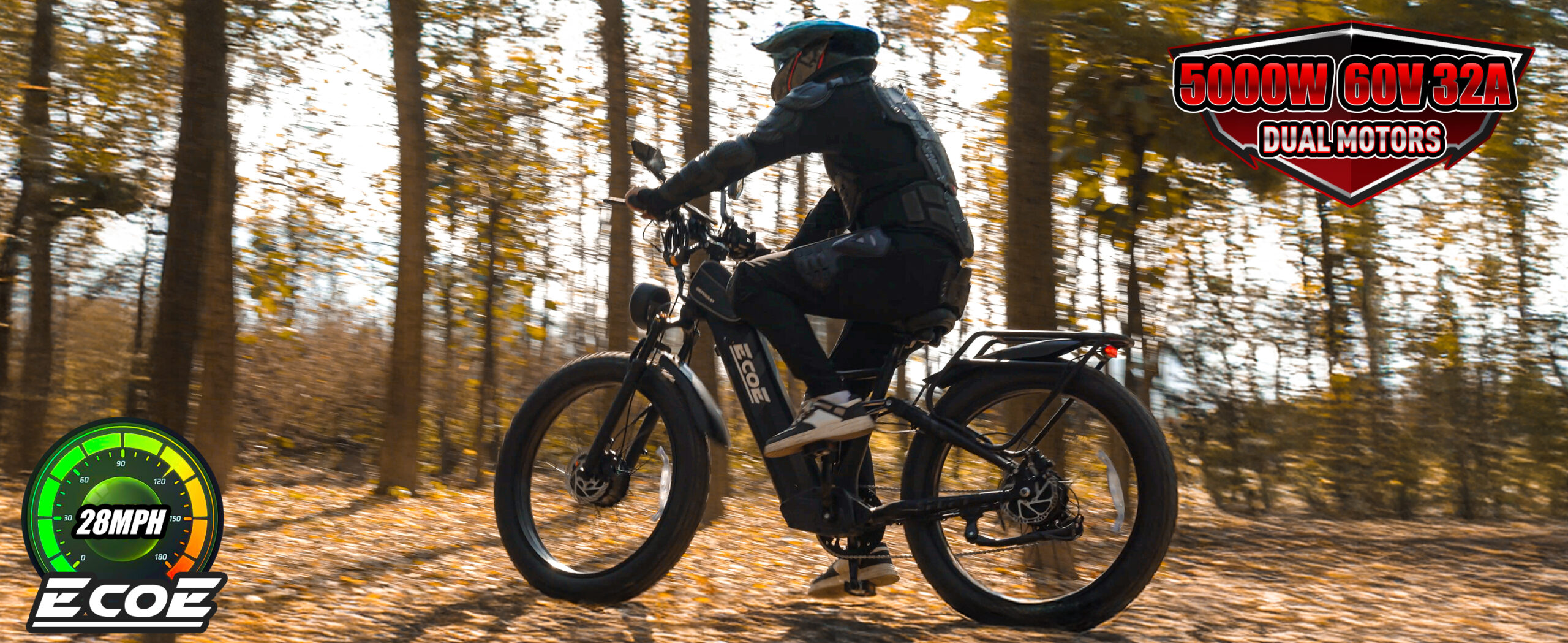
Apr 14, 2025
|
0 comments
Why Are E-Bikes Limited to 15 mph? Understanding the Speed Limits on Electric Bikes
Electric bikes have rapidly gained popularity as an efficient, eco-friendly, and convenient mode of transport. But many riders often wonder: Why are e-bikes limited to 15 mph? In this article, we dive into the reasons behind the speed limits on electric bikes, including legal regulations, safety considerations, and technical factors. We’ll also explore how these limits vary and what it means for riders. One of the primary reasons why e-bikes are often limited to speeds of 15 mph (24 km/h) is due to legal regulations. These regulations are in place to ensure the safety of riders, pedestrians, and other road users. In the United States, e-bikes are categorized into three classes based on their features and speed: The 15 mph limit generally applies to areas where e-bikes fall under Class 1 or Class 2 categories, especially in places with more stringent regulations. For example, in some areas, the legal limit may be lower to ensure that e-bikes can coexist safely with pedestrians and traditional bicycles, especially in crowded urban environments. Another reason e-bikes are limited to speeds like 15 mph is to ensure rider safety. At higher speeds, the dynamics of riding an e-bike change significantly. Braking distances become longer, and the risk of injury increases if a rider loses control. E-bikes with speeds exceeding 15 mph can pose significant challenges, especially in urban areas with dense traffic and pedestrians. Riders need more experience, skill, and attention to safely handle higher speeds. By limiting e-bike speeds to 15 mph, authorities ensure that riders are less likely to face dangerous situations while on the road. For example, Ecoe Electric Bikes offer pedal-assist models with speeds up to 20 mph, carefully designed to maintain stability and safety even at higher speeds. These e-bikes strike a balance between speed and safety, but they […]
Read more
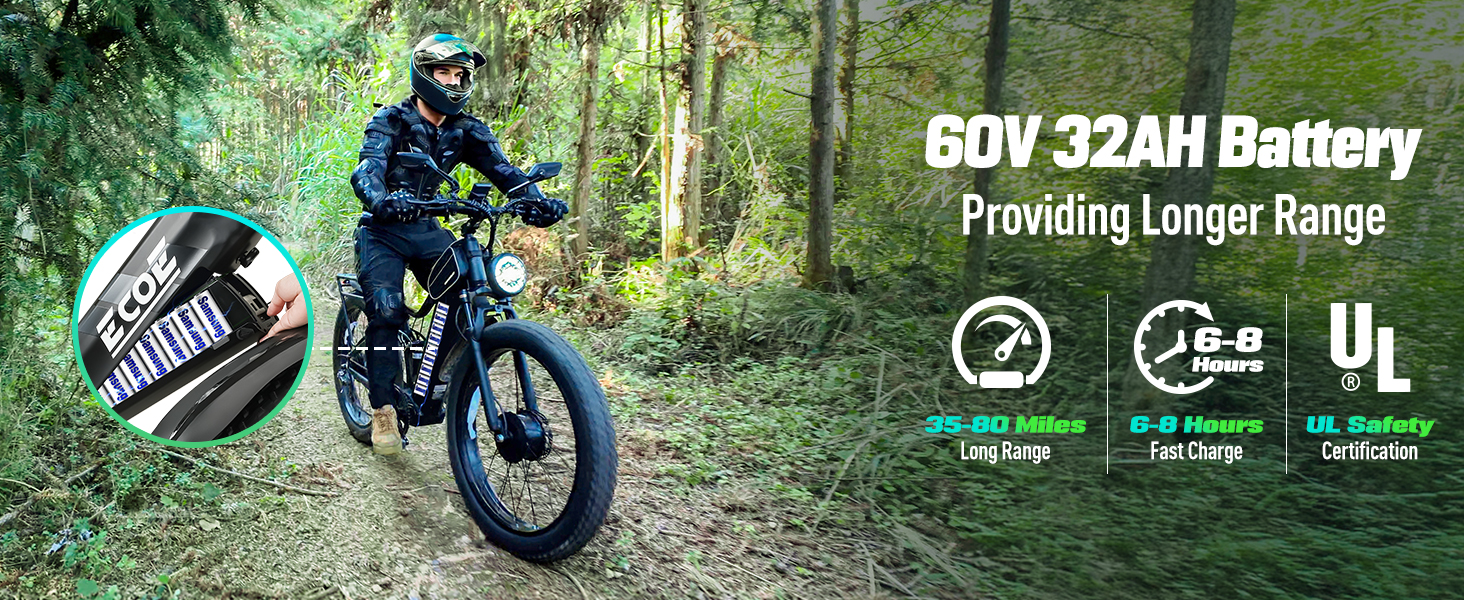
Apr 14, 2025
|
0 comments
Do Electric Bikes Have a Speed Limit? Understanding the Legal and Performance Boundaries
Electric bikes have become a popular mode of transportation, offering a faster, eco-friendly alternative to traditional cycling. But just like any vehicle, there are speed limits that govern how fast they can go. In this article, we explore the factors that affect the top speed of electric bikes, the legal speed limits in different regions, and how to ensure your e-bike complies with the rules while still delivering an exhilarating ride. One of the first things to understand about electric bikes is that, yes, they do have speed limits, especially when it comes to street use. The rules vary by country, state, and even city, so it’s essential to know the local laws before heading out. In the United States, electric bikes are generally classified into three categories, each with its own speed limit: These limits ensure that e-bikes remain safe for public use while not exceeding speeds that could cause danger to the rider or pedestrians. Of course, local laws can vary, so always check your area’s regulations before purchasing or riding an e-bike. In other parts of the world, speed limits for electric bikes are often similar but can differ based on each country’s transportation laws. While these limits are set to ensure safety, many e-bike enthusiasts wonder: What happens if you want to go faster? Can you modify your bike to exceed these limits? The short answer is yes, it is possible to modify an electric bike to increase its speed. However, doing so may violate local laws. Many e-bike owners opt for motor controller adjustments or battery upgrades to increase the power of their bikes. While these modifications can enhance performance, they often push the bike’s speed beyond legal limits. In some regions, modified bikes that exceed the legal limits could face fines or be deemed […]
Read more
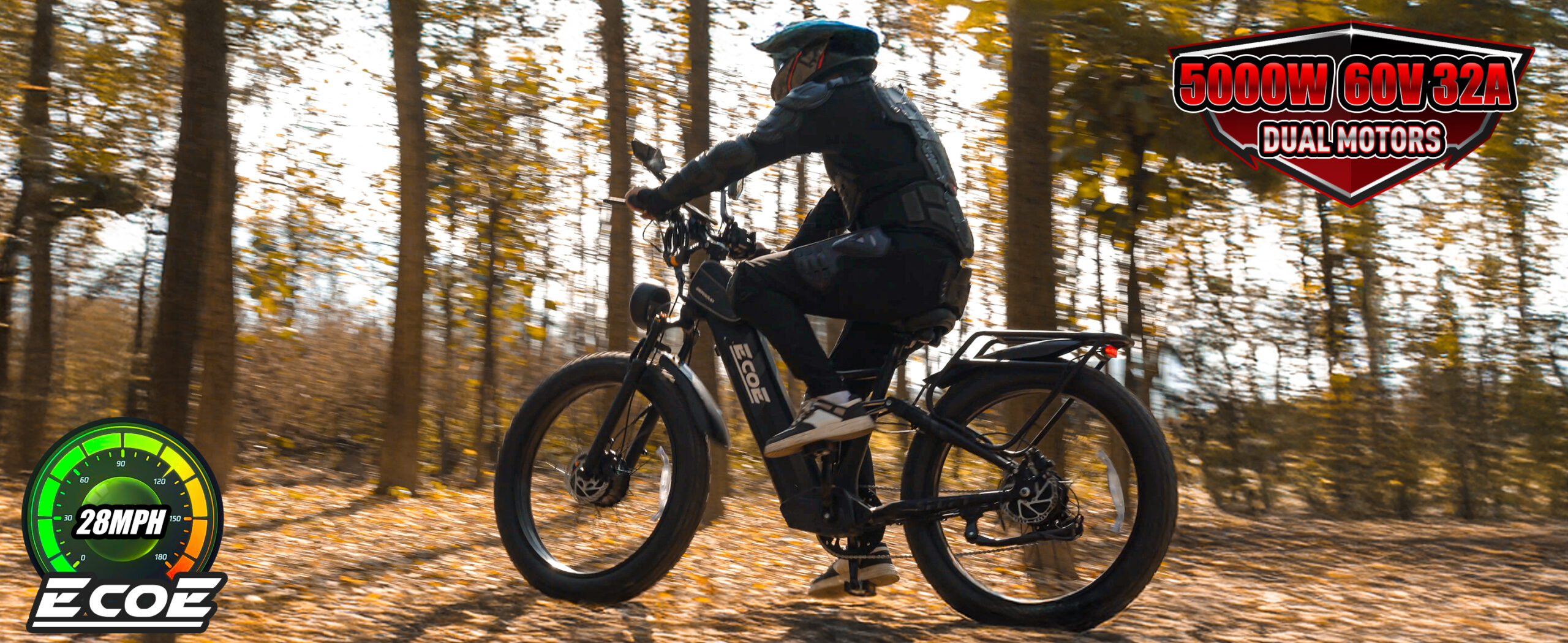
Apr 14, 2025
|
0 comments
Development History of Maximum Speeds for Electric Bicycles (Late 19th Century – 1950s)
The EcoE 5000W electric bike Powerful Motor: EcoE is equipped with a 60V 5000W high-speed brushless motor. Due to different loads and road conditions, the electric bike drive system provides adjustable assistance, allowing you to stay healthy, relax, and exercise.Accessories: This electric bike accessory set includes a rearview mirror, water bottle holder and bottle, a sturdy phone mount, and a waterproof phone pouch. The reinforced cargo rack allows you to easily carry extra items needed for your ride. Additionally, if you need more accessories, you can purchase a detachable storage rack, passenger safety seat, trailer, and more.60V 32AH Battery: The bike is equipped with a high-capacity, removable 32AH battery, providing longer range per charge and over 1000 charge cycles. With pedal assist, the fat tire e-bike can travel 35-80 miles, depending on riding mode, load, and terrain. You can also purchase a spare battery for extended trips.Comfort and Versatility: This fat tire electric bike comes with dual front suspension and rear shocks to reduce impact and strain during rides. Its 26-inch wheels, 4-inch tires, and SHIM 7-speed system offer excellent grip across diverse terrains. Front and rear disc brakes ensure safe, responsive stopping, whether on mountain trails or city streets. – 1. Technological Germinal Period (1890s-1910s) 2. Technological Improvement Period (1920s-1930s) 3. War and Stagnation Period (1940s) 4. Post-War Recovery Period (1950s) Key Milestones Table Year Technological Breakthrough Max Speed (km/h) Key Players Notes 1895 First hub motor patent Unspecified Ogden Bolton (US) Rear-wheel drive, no gears 1897 Dual-motor design 25-30 Hosea W. Libbey (US) Increased power, low efficiency 1910 Commercial mid-hub motor 25 Heinzmann (Germany) Lead-acid batteries, 40 km range 1920 Generator-assisted system 35 French Moulton Fuel-dependent 1930 Dual-chain transmission 40 Yamaha (Japan) Pedal-motor synergy 1940 Wartime prototypes 45 Unspecified Uncommercialized 1950 Lightweight motors & sealed batteries 50 Yamaha (Japan) First modern-like e-bike
Read more
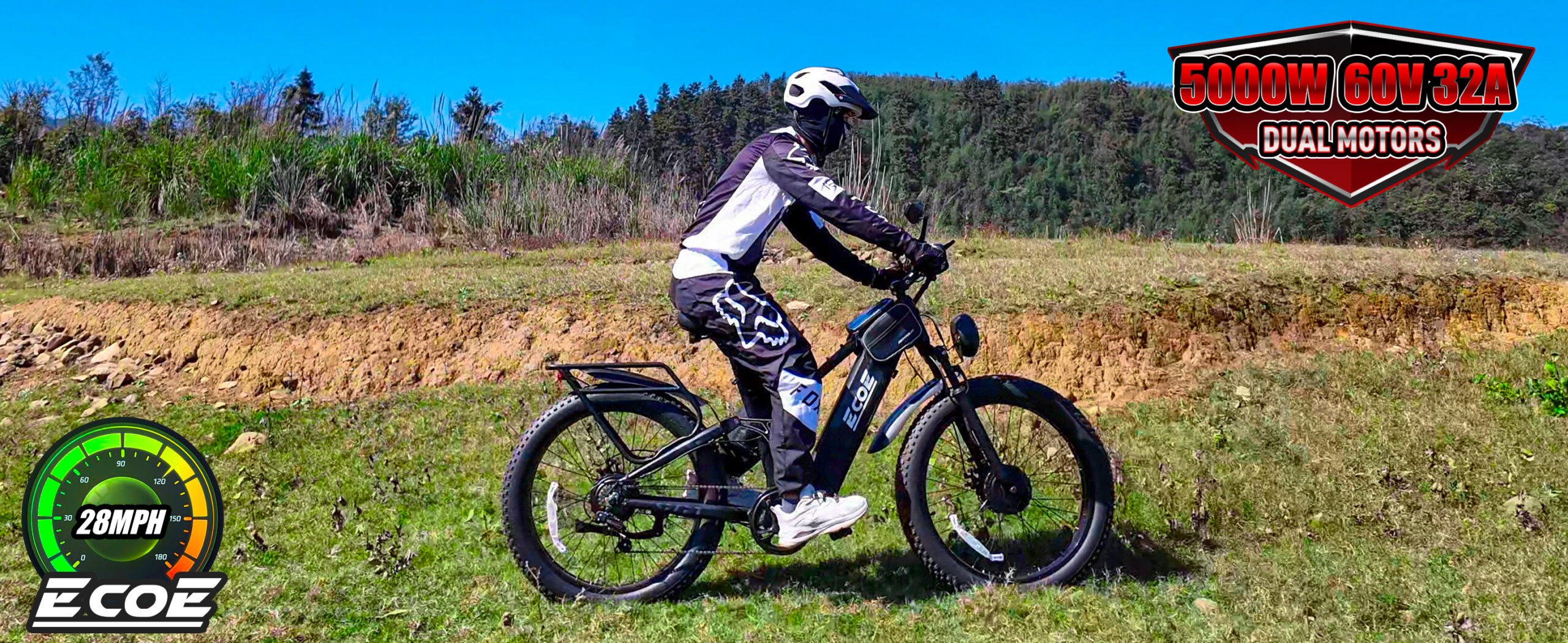
Apr 14, 2025
|
0 comments
Development History of Maximum Speed in Electric Bikes
The EcoE 5000W electric bike Powerful Motor: EcoE is equipped with a 60V 5000W high-speed brushless motor. Due to different loads and road conditions, the electric bike drive system provides adjustable assistance, allowing you to stay healthy, relax, and exercise.Accessories: This electric bike accessory set includes a rearview mirror, water bottle holder and bottle, a sturdy phone mount, and a waterproof phone pouch. The reinforced cargo rack allows you to easily carry extra items needed for your ride. Additionally, if you need more accessories, you can purchase a detachable storage rack, passenger safety seat, trailer, and more.60V 32AH Battery: The bike is equipped with a high-capacity, removable 32AH battery, providing longer range per charge and over 1000 charge cycles. With pedal assist, the fat tire e-bike can travel 35-80 miles, depending on riding mode, load, and terrain. You can also purchase a spare battery for extended trips.Comfort and Versatility: This fat tire electric bike comes with dual front suspension and rear shocks to reduce impact and strain during rides. Its 26-inch wheels, 4-inch tires, and SHIM 7-speed system offer excellent grip across diverse terrains. Front and rear disc brakes ensure safe, responsive stopping, whether on mountain trails or city streets. – 1. Technical Context The maximum speed of electric bikes is influenced by motor power, battery technology, regulatory limits, and safety design. Early models prioritized commuting with low speeds; as technology advanced and market demands evolved, high-speed electric bikes and motorcycles emerged, with regulations defining speed classes (e.g., EU EPAC, US Class systems). 2. Evolution Stages and Key Events Timeframe Technical/Regulatory Background Representative Models/Events Maximum Speed Regulatory and Application Impact Late 19th–1950s Early electric bike prototypes, lead-acid batteries + DC motors First electric bike invented in the US (1895); 1930s UK Raleigh electric bike 10–20 km/h Limited to short-distance use, no speed regulations 1960s–1990s […]
Read more

Apr 13, 2025
|
0 comments
How fast do electric bikes go without pedaling
If you’ve ever wondered how fast electric bikes can go without pedaling, you’re not alone. For many, the thought of cruising around on an e-bike with just a throttle sounds like the dream. But the real question is—how fast can these bikes actually go without needing to pedal? We dug into the details, tested various models, and explored the facts behind throttle-only riding. Here’s everything you need to know. First, let’s break down what it means to ride an electric bike without pedaling. Throttle-only mode, typically found on Class 2 e-bikes, allows you to control the bike’s speed by simply pressing the throttle, just like you would with a scooter or motorcycle. In Class 2 e-bikes, you can go up to 20 mph without pedaling. This is the limit in many places, especially in cities that have specific regulations for e-bikes. While the bike will still have pedal-assist capabilities, you don’t need to pedal to move. Just twist or press the throttle, and away you go. We decided to put this theory to the test by riding different bikes with throttle-only systems, including some powerful models like the Ecoe Electric Bike 5000W. From our testing, most electric bikes with throttle-only functionality top out around 20 mph, as mentioned earlier. However, faster models, like the Ecoe Electric Bike, can offer speeds closer to 28 mph or higher, even in throttle-only mode. This particular e-bike is a beast with its 5000W motor, capable of handling higher speeds thanks to its dual-motor system. On smooth roads, we managed to easily reach 25-28 mph without pedaling. But keep in mind, such high speeds usually require good road conditions and a fully charged battery. We were surprised to find how smooth the ride felt. No pedaling, no effort—just the wind in our faces as the […]
Read more
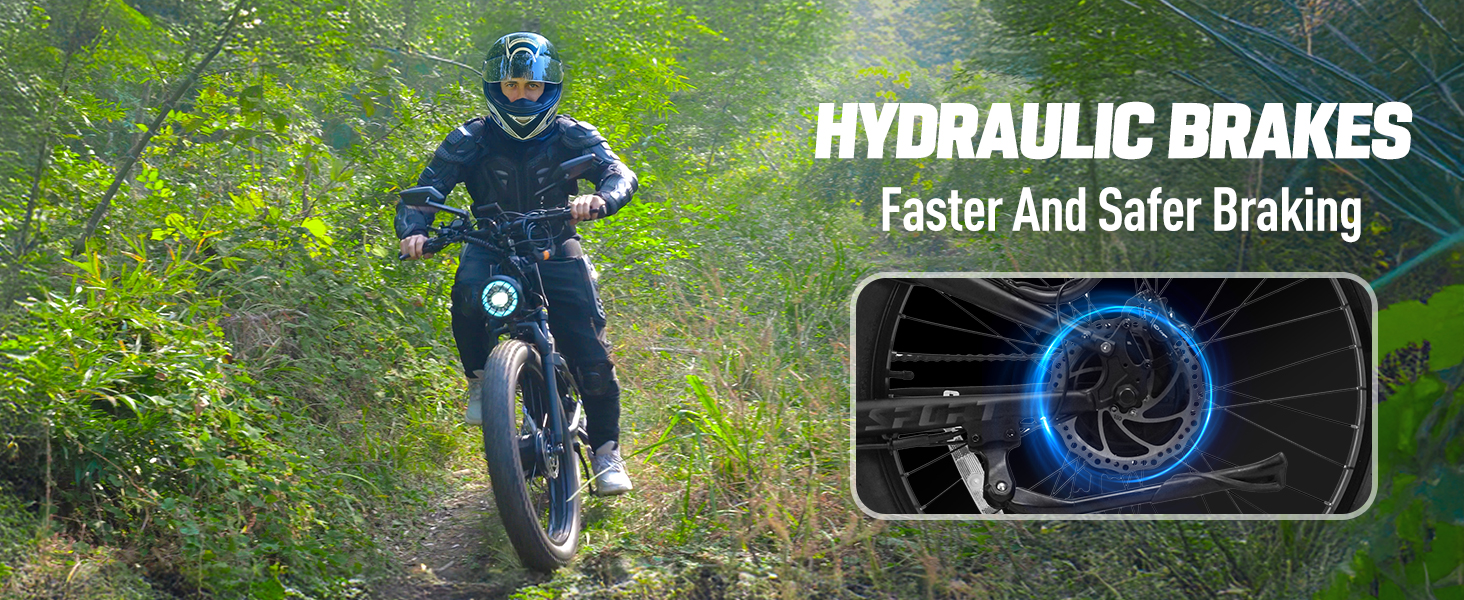
Apr 13, 2025
|
0 comments
Technical Development History of Dynamic Mapping and End-to-End Models in E-Bike Autonomy
The EcoE 5000W electric bike Powerful Motor: EcoE is equipped with a 60V 5000W high-speed brushless motor. Due to different loads and road conditions, the electric bike drive system provides adjustable assistance, allowing you to stay healthy, relax, and exercise.Accessories: This electric bike accessory set includes a rearview mirror, water bottle holder and bottle, a sturdy phone mount, and a waterproof phone pouch. The reinforced cargo rack allows you to easily carry extra items needed for your ride. Additionally, if you need more accessories, you can purchase a detachable storage rack, passenger safety seat, trailer, and more.60V 32AH Battery: The bike is equipped with a high-capacity, removable 32AH battery, providing longer range per charge and over 1000 charge cycles. With pedal assist, the fat tire e-bike can travel 35-80 miles, depending on riding mode, load, and terrain. You can also purchase a spare battery for extended trips.Comfort and Versatility: This fat tire electric bike comes with dual front suspension and rear shocks to reduce impact and strain during rides. Its 26-inch wheels, 4-inch tires, and SHIM 7-speed system offer excellent grip across diverse terrains. Front and rear disc brakes ensure safe, responsive stopping, whether on mountain trails or city streets. – 1. Technical Background 2. Evolution Stages Timeframe Key Technologies Notable Achievements/Events Use Cases Challenges 2020-2022 Dynamic map frameworks + early E2E integration – Tesla’s “Occupancy Network”– Mobileye Roadbook dynamic maps released Real-time path planning in highways Poor data timeliness, weak model generalization 2023 Multimodal fusion + lightweight models – NVIDIA DRIVE Sim for virtual dynamic map training– Horizon Journey 6 chip for E2E inference Complex urban pedestrian/vehicle prediction High computational demands, edge case handling 2024-Present Predictive dynamic maps + RL optimization – Waymo open-sources PAVE E2E driving model– Meituan’s delivery robots use dynamic maps + RL Real-time scheduling for shared e-bikes Ethical issues […]
Read more
